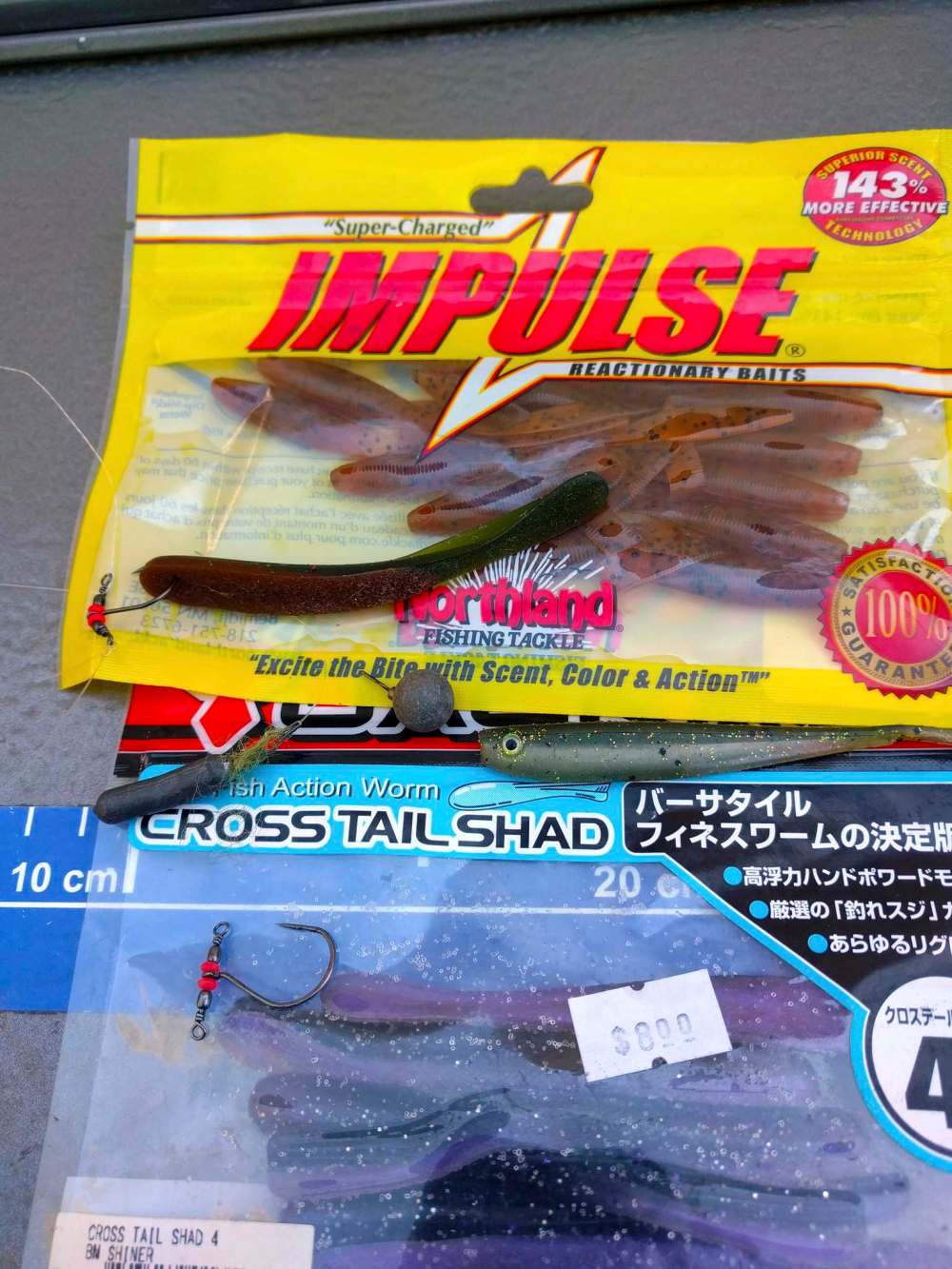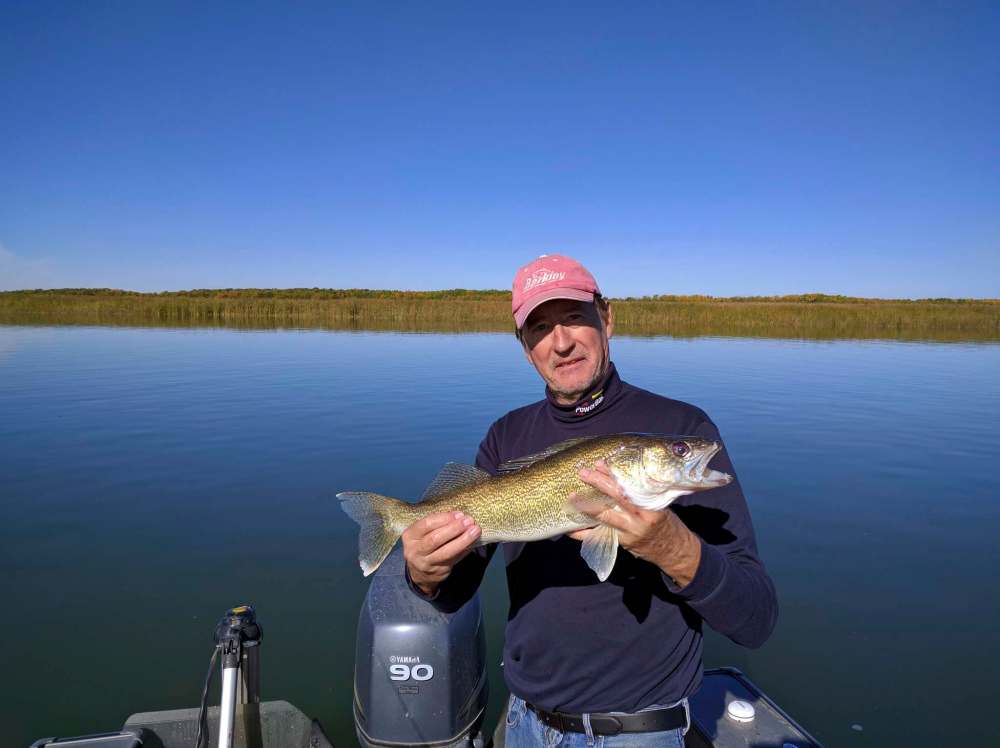Hook, line and drop shot rigs
Knowing seasonal patterns can help you reel in that catch
Advertisement
Read this article for free:
or
Already have an account? Log in here »
To continue reading, please subscribe:
Monthly Digital Subscription
$1 per week for 24 weeks*
- Enjoy unlimited reading on winnipegfreepress.com
- Read the E-Edition, our digital replica newspaper
- Access News Break, our award-winning app
- Play interactive puzzles
*Billed as $4.00 plus GST every four weeks. After 24 weeks, price increases to the regular rate of $19.00 plus GST every four weeks. Offer available to new and qualified returning subscribers only. Cancel any time.
Monthly Digital Subscription
$4.75/week*
- Enjoy unlimited reading on winnipegfreepress.com
- Read the E-Edition, our digital replica newspaper
- Access News Break, our award-winning app
- Play interactive puzzles
*Billed as $19 plus GST every four weeks. Cancel any time.
To continue reading, please subscribe:
Add Free Press access to your Brandon Sun subscription for only an additional
$1 for the first 4 weeks*
*Your next subscription payment will increase by $1.00 and you will be charged $16.99 plus GST for four weeks. After four weeks, your payment will increase to $23.99 plus GST every four weeks.
Read unlimited articles for free today:
or
Already have an account? Log in here »
Hey there, time traveller!
This article was published 12/08/2017 (2998 days ago), so information in it may no longer be current.
One of the most effective big walleye and bass patterns is often overlooked by anglers in this part of the world. In summer, when many of our fish have retreated to deeper water, their search for food makes them cover ground.
In many of our deep natural lakes in Manitoba and northwestern Ontario, there are extended areas of sand and mud extending out to main lake basins. If water clarity is good, light can penetrate the depths allowing deep weed growth. In some lakes in the Canadian Shield, this can extend out to as deep as seven metres. These spots can be a bit tricky to find, but when you do, the fishing can be outstanding.
Chara, commonly called sandgrass, will hold schools of minnows trying to hide from larger predators that could include a variety of species of larger fish.

This pattern was certainly evident in Clear Lake when I was there the third week of July. Over the years, I have identified a few spots scattered around the lake with these deep weeds and every summer when I go back, they have fish on them.
On this trip, we only spent one morning fishing for walleye, but by far the most effective presentation was a drop shot rig. I had given this rig to one of the more inexperienced anglers in the boat, but she caught more walleye than the rest of us. There are a few reasons for this.
One strength of a drop shot is its weight dangles on a tag end below the hook. This creates the following advantages: an unweighted bait falls slowly on slack line and moves naturally when twitched slightly. This means you don’t really have to impart any action to the bait when fishing it.
There’s virtually no resistance when a walleye takes an unweighted drop-shot bait. Many times the inexperienced angler suddenly realizes they have a fish on the end of the line.
With the weight separated from the bait, you can use a heavier weight to get to the bottom in deeper water. In this case, we were using a ¼-ounce tungsten dropshot weight with a VMC Spinshot drop shot hook.
Grass, chara and algae grow on sand and soft-bottom flats where walleye hunt perch and baitfish. Keeping a jig clean, while maintaining a finesse presentation can be tricky. A drop shot with a long tag end does this easily. It raises the bait above clingy plants and stays visible to prowling fish. It certainly proved to be the ticket on this day, out fishing jigs tipped with live leeches.
Fishing a drop shot for walleye is pretty simple, but there are a few things that will help you be more successful.
Your choice of rod and reel is very important. I like a medium or medium-light action with a nice soft tip so the fish can load up without feeling any pressure. Match this with a decent spinning rod spooled with a smaller diameter braid or monofilament tipped with eight-pound fluorocarbon. This combination of braid and fluorocarbon allows you to feel what is going on while providing a natural presentation. I don’t like using straight fluorocarbon on any of my rods because of the stiffness of the line.
For a hook, use one that isn’t too big so the bait can work naturally. Usually a 1, or 1/0 is perfect. I like the VMC Spinshot Dropshot hook because it has a small swivel on each end of the hook. This allows you to tie direct without the use of a Palomar knot and also prevents line twist.

Nose hooking is a good all-round choice for the best action with a finesse plastic. However, when walleye are stealing baits, threading a ¼ inch to ½ inch of the bait onto the hook shank boosts durability. The bait must be straight. This rigging can reduce action, but it saves baits.
When fishing sandgrass, a nice 16-inch tag line works well to get the bait above the sandgrass. You can see in the photo below that it’s the weight that has the sandgrass on it, not the lure. As in any presentation, it pays to experiment a bit with tag lengths and different types of plastics.
On this day, the Jackall Cross Tail Shad was the ticket, but the Impulse Leech from Northland is also very good. I especially love it for smallmouth!
This is the time of year that a drop shot rig excels for deeper fish. Give them a shot this summer.
dlamont@mymts.net

